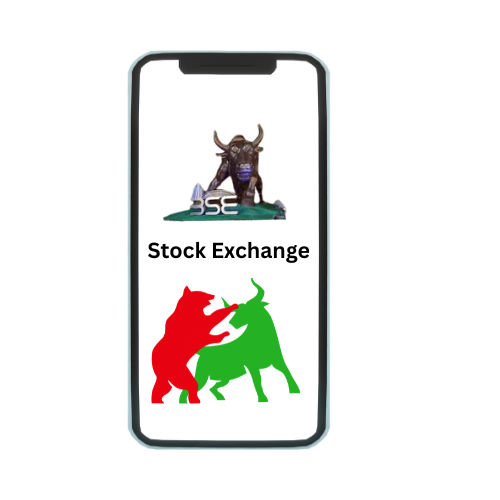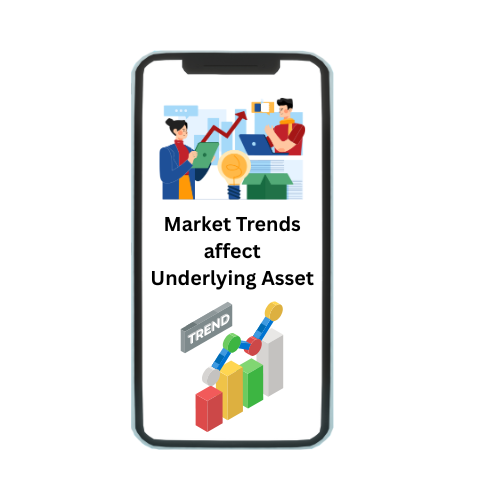In financial management, the concept of explicit costs is foundational to understanding a business’s expenditure and financial health. Explicit costs, often referred to as out-of-pocket costs, encompass the tangible expenses that businesses directly pay for the resources and services necessary to operate. These costs include items such as wages for employees, rent for office or production space, utilities like electricity and water, raw materials used in production, and any other direct payments made to suppliers and service providers. Unlike implicit costs, which represent opportunity costs and are not directly measurable, explicit costs are clear, quantifiable expenditures that businesses must factor into their financial planning and decision-making processes. Understanding and accurately calculating explicit costs are essential for businesses to manage their finances effectively, make informed pricing decisions, and ensure profitability.
What Is An Explicit Cost?
An explicit cost, also known as an out-of-pocket cost, refers to the direct monetary expenses that a business incurs in its day-to-day operations. These costs are tangible and measurable, involving payments made to suppliers, service providers, and employees for resources and services used. Examples of explicit costs include wages paid to employees, rent for office or production space, utility bills such as electricity and water, raw materials used in manufacturing, and payments for advertising and marketing services. Explicit costs are crucial for businesses to manage, as they directly impact the profitability and financial health of the organization. Understanding and accurately calculating explicit costs enable businesses to make informed decisions about pricing, budgeting, and resource allocation, ensuring that expenses are effectively controlled and managed within the available financial resources.
Types Of Explicit Costs
Types of explicit costs can be categorized based on their behavior and impact on business operations:
- Variable Costs: These costs fluctuate with the level of production or sales. Examples include the cost of raw materials, direct labor wages, and utilities directly related to production volume. Variable costs increase or decrease as production levels change, making them directly proportional to the business activity.
- Fixed Costs: Fixed costs remain constant regardless of the level of production or sales. Examples include rent for office or production space, insurance premiums, and salaries of permanent employees. These costs do not vary with the business activity and must be paid regularly to keep the business operational.
- Semi-Variable Costs: Semi-variable costs have both fixed and variable components. For example, utility costs may include a fixed component (basic service charge) and a variable component (usage-based charges). This category of costs requires careful monitoring to understand how each component affects the total cost structure.
Examples Of Explicit Costs In Different Industries
Explicit costs vary significantly across different industries, reflecting the specific nature of each sector’s operations and resource requirements. Here are examples of explicit costs in various industries:
Manufacturing Industry: In manufacturing, explicit costs primarily include the cost of raw materials, direct labor wages, factory rent, and utilities like electricity, water, and gas. Raw materials are essential for producing goods, while direct labor costs involve payments to workers involved in the production process. Factory rent and utility expenses ensure that production facilities are operational and equipped with essential services.
Service Industry: In the service industry, explicit costs encompass the wages of employees providing services, rent for office space or storefronts, costs of office supplies and equipment, and utilities such as internet and telephone services. For example, a consulting firm would have explicit costs related to employee salaries, office rent, and necessary equipment to deliver consulting services.
Retail Industry: Retailers incur explicit costs related to inventory, employee salaries, store rent, utilities, and packaging materials. Inventory costs include the purchase price of goods sold in stores, while store rent and utility expenses ensure that retail spaces are operational and adequately equipped. Employee salaries are also a significant expense for retail businesses, ensuring that customer service and store operations run smoothly.
Importance Of Explicit Costs In Business Decision-Making
Explicit costs play a vital role in business decision-making processes for several reasons:
- Cost Control: Understanding explicit costs helps businesses control their expenses effectively. By identifying and monitoring these costs, businesses can implement cost-saving measures and optimize resource allocation. This is crucial for maintaining profitability and financial stability.
- Pricing Strategies: Explicit costs directly influence pricing decisions. Businesses need to ensure that the prices they set cover both explicit and implicit costs while remaining competitive in the market. Pricing too low could lead to losses, while pricing too high could drive away customers.
- Budgeting and Planning: Explicit costs provide a clear picture of the financial resources needed to operate the business. This information is essential for creating budgets, forecasting future expenses, and planning investments. It helps businesses allocate funds efficiently and avoid financial crises.
- Profitability Analysis: By understanding explicit costs, businesses can accurately calculate their profit margins. This analysis is crucial for evaluating the profitability of products, services, and business operations. It allows businesses to focus on areas that generate the most profit and adjust strategies where necessary.
- Financial Health: Explicit costs are indicators of the overall financial health of a business. Regularly reviewing these costs helps businesses assess their financial performance, identify areas for improvement, and make informed decisions about future investments and growth strategies.
Calculation And Measurement Of Explicit Costs
Calculating and measuring explicit costs is essential for businesses to understand their financial obligations and make informed decisions. Here’s a detailed explanation of how explicit costs are calculated and measured:
- Identifying Each Cost Component: The first step in calculating explicit costs is to identify all direct monetary expenses incurred by the business. This includes costs such as wages for employees, rent for office or production space, utilities like electricity and water, raw materials used in production, and payments to suppliers and service providers.
- Summing Up All Costs: Once identified, these costs are aggregated to determine the total explicit cost incurred by the business over a specific period. This total provides a clear picture of the financial resources that have been directly expended to sustain business operations.
- Periodically Reviewing And Updating Costs: It’s important to regularly review and update the identified costs to ensure accuracy in financial planning and decision-making. Business expenses can fluctuate due to changes in production levels, market conditions, or supplier prices. By updating cost information regularly, businesses can adjust their budgets and strategies accordingly.
- Analyzing Cost Efficiency: Beyond simply totaling expenses, businesses should analyze the efficiency of their spending. This involves comparing actual costs against budgeted amounts and industry benchmarks to identify areas where costs can be reduced or reallocated more effectively.
- Using Accounting Systems: Many businesses use accounting systems and software to streamline the process of calculating explicit costs. These systems help automate the collection of expense data, ensure accuracy in calculations, and generate reports that facilitate decision-making.
- Forecasting Future Costs: In addition to analyzing historical costs, businesses should forecast future expenses based on expected changes in operations, market conditions, and business plans. This proactive approach helps businesses anticipate financial needs and make adjustments to their strategies as needed.
Difference Between Explicit Costs And Implicit Costs
The difference between explicit costs and implicit costs lies in their nature and how they impact business finances:
- Explicit Costs: Explicit costs are tangible and measurable expenses that a business incurs in its operations. These costs involve direct monetary payments for resources, goods, and services. Examples of explicit costs include wages paid to employees, rent for office or production space, utility bills (like electricity and water), raw materials used in production, and payments to suppliers and service providers. Explicit costs are straightforward to identify and quantify, making them essential for budgeting, financial reporting, and decision-making. They represent the actual out-of-pocket expenses that a business must pay to maintain its operations.
- Implicit Costs: Implicit costs, on the other hand, are opportunity costs that arise from using resources in a particular way rather than in their next best alternative use. Unlike explicit costs, implicit costs are not incurred through direct monetary payments but rather represent the potential income or benefits forgone by choosing one option over another. Examples of implicit costs include the salary foregone by an entrepreneur who decides to start their own business instead of working for someone else, or the interest that could have been earned if funds were invested rather than kept in a savings account. Implicit costs are not recorded in accounting statements but are crucial for economic decision-making, as they reflect the true cost of choices made by a business.
Challenges And Limitations Associated With Explicit Cost Analysis
Explicit cost analysis, while crucial for financial management, faces several challenges and limitations that businesses need to navigate:
- Accuracy Issues: One of the primary challenges in explicit cost analysis is ensuring the accuracy of cost estimates. Estimating and calculating costs accurately can be challenging, especially when dealing with indirect expenses or costs that fluctuate over time. Errors in cost estimation can lead to misleading financial reports and inaccurate decision-making.
- Time Constraints: Analyzing explicit costs can be time-consuming, particularly for businesses with complex cost structures or large amounts of data. This process requires gathering, categorizing, and analyzing data from various sources, which can divert resources and attention from other critical business activities.
- Dynamic Nature of Costs: Costs can vary over time due to changes in market conditions, technology, regulations, or supplier prices. This dynamic nature makes it challenging to predict future costs accurately and requires businesses to continuously update their cost analysis to reflect current realities.
- Complexity in Cost Allocation: Allocating costs accurately to different products, services, or departments can be complex, especially for businesses with diverse operations or shared resources. Incorrect cost allocation can distort profitability analysis and hinder effective decision-making.
- Subjectivity in Cost Classification: Classifying costs as explicit or implicit can sometimes be subjective, particularly when costs have both tangible and intangible elements. This subjectivity can lead to inconsistencies in cost reporting and make it difficult to compare costs across different periods or entities.
- Integration with Strategic Planning: Integrating explicit cost analysis with strategic planning processes can be challenging. Businesses need to ensure that their cost analysis aligns with their long-term goals and supports decision-making that promotes sustainable growth and profitability.
Conclusion
In conclusion, understanding and effectively managing explicit costs are essential for businesses to maintain financial health, make informed decisions, and achieve long-term profitability. Explicit costs, which include direct monetary expenses like wages, rent, utilities, and raw materials, provide a clear picture of the financial resources required to sustain operations. By accurately calculating and analyzing these costs, businesses can control expenses, optimize resource allocation, and set competitive prices. However, explicit cost analysis is not without its challenges, such as accuracy issues, time constraints, and the dynamic nature of costs. Overcoming these challenges requires businesses to invest in robust financial management practices, utilize advanced accounting tools, and continuously update their cost analysis. By integrating explicit cost analysis with strategic planning, businesses can navigate these challenges effectively, make sound financial decisions, and position themselves for sustainable growth in a competitive business environment.






